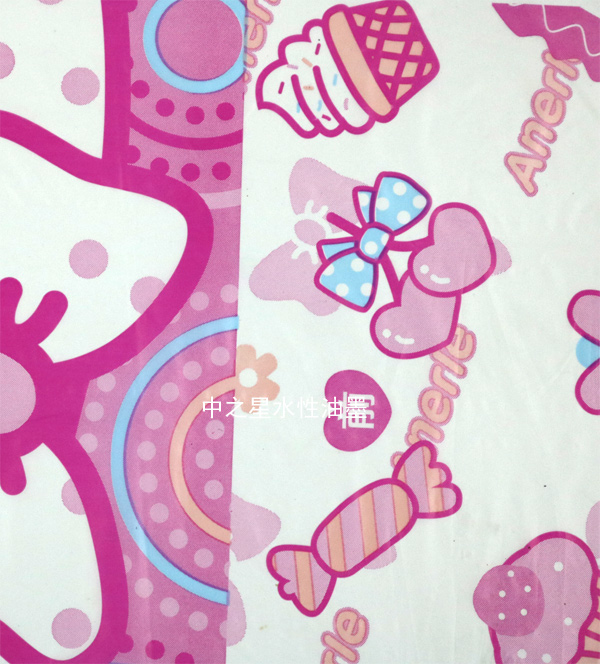The difference between water-based ink, solvent-based ink and UV ink
Date: Sep 19 2023 From: Star Color Views:
Water-based ink, solvent-based ink, and UV ink are all types of inks used in various printing and marking applications. They differ in their composition, drying mechanisms, and suitability for different substrates. Here's an overview of each type:
Water-based Ink:
Water-based ink is made primarily from water, along with color pigments, binders, and additives. It's known for being environmentally friendly due to its low VOC (volatile organic compounds) content. Water-based inks are commonly used in applications like flexographic, offset, and digital printing. Here are some key characteristics:
Drying Mechanism: Water-based inks dry through the process of evaporation. The water content evaporates into the air, leaving behind the pigments and binders on the substrate.
Substrates: They are suitable for porous surfaces like paper, cardboard, and certain textiles. They might not work well on non-porous surfaces since the water could be absorbed unevenly.
Advantages: Water-based inks are eco-friendly, have low odor, and offer good color reproduction. They are often used in food packaging and other applications where safety and environmental concerns are important.
Disadvantages: Slower drying time compared to other types of inks, limited compatibility with non-porous surfaces, and potential for color bleeding on absorbent substrates.
Solvent-based Ink:
Solvent-based ink consists of pigments or dyes dissolved in a solvent (organic solvents like acetone, toluene, or ethanol). These inks are widely used in applications like flexography, gravure, and large format printing. Here are the key characteristics:
Drying Mechanism: Solvent-based inks dry as the solvent evaporates into the air, leaving behind the colorants on the substrate.
Substrates: They can be used on a wide range of substrates, including both porous and non-porous surfaces like plastics, vinyl, and metal.
Advantages: Fast drying time, excellent adhesion to various substrates, and durability against environmental conditions.
Disadvantages: High VOC content, strong odor, and environmental concerns due to solvent emissions. They might also have compatibility issues with certain substrates and require proper ventilation during printing.
UV Ink (Ultraviolet-curable Ink):
UV ink is a unique type of ink that contains monomers, oligomers, pigments, photoinitiators, and other additives. The ink remains liquid until exposed to ultraviolet (UV) light, which triggers a chemical reaction that rapidly cures the ink. Here's what you should know:
Drying Mechanism: UV inks cure almost instantly when exposed to UV light. The ink changes from a liquid to a solid state through a polymerization process.
Substrates: They can be used on a wide range of materials, including paper, plastics, glass, metals, and even some 3D objects.
Advantages: Instant curing, high print quality, resistance to fading and scratching, and the ability to print on various substrates.
Disadvantages: Higher initial cost due to the need for UV curing equipment, potential for ink viscosity changes during printing, and concerns about UV light exposure for operators.
Each type of ink has its own strengths and weaknesses, and the choice of ink depends on factors such as the printing process, the substrate, environmental considerations, and the desired end result.

 RU
RU
 EN
EN
 CN
CN

